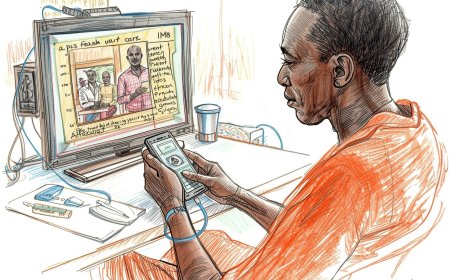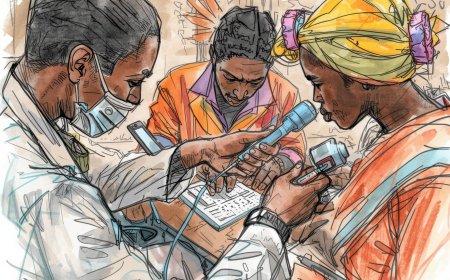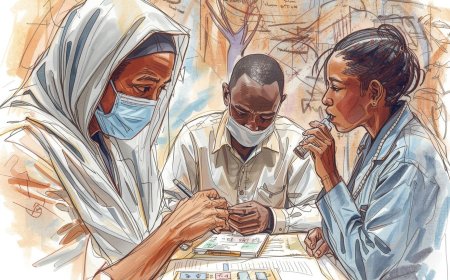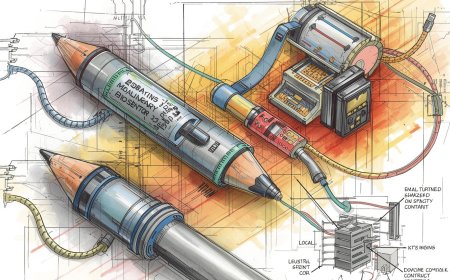How Think Tanks Influence National Health Policy: Case Studies and Methods
A practical, Africa-focused playbook showing how policy think tanks turn evidence into laws, budgets and programmes. Covers methods (research, convening, policy briefs, pilots, media, coalitions), real African case studies (APHRC, ThinkWell initiatives, Health Systems Trust, MomConnect evidence links), step-by-step engagement tactics, monitoring of policy influence, and common pitfalls — all with APA citations and live links. Tailored for researchers, policymakers, civil-society leaders and funders who want their evidence to matter.
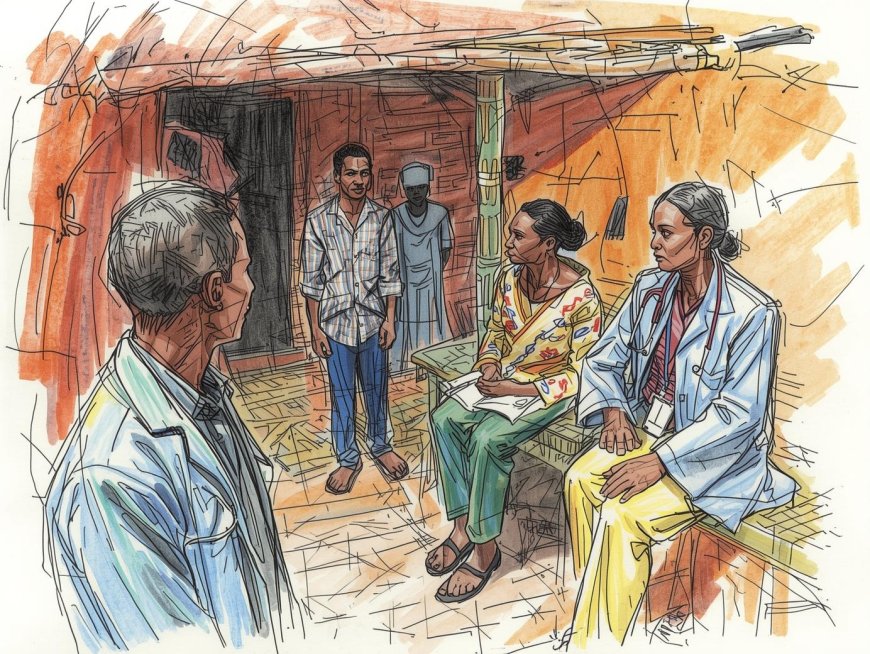
Short brief: If a think tank were a cricket team, its job is less about scoring flashy sixes on demo day and more about building innings that change how governments play the game. This guide explains — in plain English and with a few rib-cracking anecdotes — how think tanks actually move national health policy in African countries, which tools work best, and how to measure whether your policy work is producing real change.
Why think tanks matter — quick and blunt
Think tanks and health policy research institutes translate messy evidence into usable policy inputs: short policy briefs, convenings that matter, and pilot projects that prove an idea in local clinics. When done well they reduce the “so what?” gap that keeps good science from becoming good policy. International reviews show think tanks in low- and middle-income countries can and do influence policy — but influence depends on relationships, timing, and understanding political context. PMC+1
A tiny rib-cracker to start your morning
“Imagine you bring a five-page randomized trial to a cabinet meeting. The minister flips to page three, frowns and asks, ‘So what do I do tomorrow?’ That’s when the think tank leans in with a one-page actionable brief, a champion in the Ministry, and — if needed — a pilot site with nurses who will show the minister it actually works.” In short: think tanks turn ‘science’ into ‘doable’.
The playbook — 8 methods think tanks use to influence national health policy
Below are practical, repeatable methods used by successful health policy think tanks and research institutes. Each method is followed by how to do it (practical tips) and an evidence or Africa example.
-
Produce policy-focused, decision-ready evidence
-
What: Rapid evidence syntheses, targeted policy briefs, costed options and clear recommendations — not journal-length literature reviews.
-
How: Translate academic findings into 1–2 page policy briefs with clear “what should the Ministry do tomorrow?” bullets and worst/best case budget figures. Tailor briefs to the ministry’s decision calendar.
-
Why it works: Decision-makers need concise actionable guidance; reviews show research must be packaged and timed to policy cycles to influence outcomes. PMC+1
-
-
Co-produce research with policymakers (policy engagement & trust building)
-
What: Jointly design studies and pilot programmes with government units so the findings answer real policy questions.
-
How: From protocol stage invite ministry technical staff onto advisory committees; share interim results during policymaking windows.
-
Example: APHRC’s model of formalized policy engagement — co-design, co-implementation and long-term relationships — has been central to its role as an evidence partner in Kenya and elsewhere. APHRC+1
-
-
Convening and facilitated dialogues (policy roundtables)
-
What: Safe, well-chaired meetings that bring politicians, senior civil servants, clinicians, donors and media together to build consensus and options.
-
How: Use neutral facilitators, prepare short briefs in advance, and close with explicit “next steps” and named owners for actions. Evidence shows convening is essential to create shared problem definitions. ThinkWell+1
-
-
Rapid policy briefs and decision trees (timely tools)
-
What: Short, dated memos or decision trees that lay out options, trade-offs and a recommended action.
-
How: Use templates; produce within days of new evidence or political opportunity. Make single-page infographics that ministers can read between calls. Think tanks that produce timely briefs increase uptake. PMC
-
-
Pilots and demonstration projects
-
What: Small, well-evaluated pilots in representative districts or hospitals that prove feasibility, cost and acceptability.
-
How: Design pilots with ministry involvement, measurable outcomes, and a clear scale-up plan. Publish short “what we learned” briefs for rapid learning cycles. Policymakers trust evidence from locally run pilots more than distant RCTs. PMC
-
-
Media engagement and public communication
-
What: Op-eds, short explainer videos, infographics and press briefings to shape public and political narratives.
-
How: Translate key findings into plain language and a press package; brief friendly journalists in advance. Public pressure can accelerate adoption of policy options. Center For Global Development
-
-
Capacity building & technical assistance
-
What: Train ministry staff to use evidence, run economic models, and track indicators.
-
How: Short secondments, workshops, and on-the-job mentoring build internal capacity so change outlives any single project. APHRC and others formalize long-term partnerships to strengthen government analytic skills. APHRC
-
-
Networks, coalitions & donor brokering
-
What: Create alliances across civil society, academia and funders to align incentives and funding for scale.
-
How: Host multi-stakeholder coalitions with clear governance and shared goals. ThinkWell’s work to create pan-African networks for health policy and systems research is a concrete example of this approach. ThinkWell+1
-
Short case studies (African examples you can read about)
1) APHRC (African Population & Health Research Center) — evidence → engagement → uptake
APHRC blends locally produced research with active policy engagement: co-design with ministries, convenings, and translation products (policy briefs). Their approach—emphasizing sustained partnerships and co-creation—illustrates how a think tank becomes a trusted “go-to” evidence partner for national ministries. APHRC+1
2) ThinkWell — building networks and systems for policy uptake
ThinkWell’s pan-African landscaping and network design work focused on strengthening health policy and systems research (HPSR) capacity and linkages between researchers and policymakers. Their model stresses the importance of networks that connect ministries, researchers and funders to accelerate evidence use. ThinkWell+1
3) Health Systems Trust (South Africa) — policy analysis and public reporting
Health Systems Trust publishes the South African Health Review and provides evidence-based analyses that inform national health debates, including financing and UHC planning. Regular public reporting and credible, locally grounded analysis build long-term influence. hst.org.za
4) Evidence influencing policy: maternal health & free-maternity programmes in Kenya
Evaluations and policy research — the kind that think tanks often produce or synthesize — have tracked the effects of free-maternity policies and programmes (e.g., Linda Mama). These evaluations help policymakers refine eligibility, financing, and implementation rules. While research rarely “yanks” policy overnight, well-timed evidence and engagement inform iterative improvements. PMC+1
A step-by-step playbook for think tanks who want to influence national policy (practical)
-
Map the decision space
-
Who decides? Which committee? What calendar? Lawyers? Funders? Map people, processes and timing. Use a one-page stakeholder map. PMC
-
-
Co-design the question
-
Form a small technical advisory group that includes at least one sympathetic ministry official and one civil-society partner. Co-design the research question to ensure relevance. APHRC
-
-
Produce decision-ready outputs
-
Create a 1-page brief, a 2-page policy options paper, a 5-page technical supplement, and a 1 slide “what ministers need to know”. Keep budgets attached. PMC
-
-
Plan pilots with scale in mind
-
Design pilots that answer “how much does it cost?” and “who runs it?” Include monitoring indicators and a short learning brief at 3 months. PMC
-
-
Convene strategically
-
Host a closed briefing for senior officials before public release. Follow with a public convening that builds broader support (clinicians, media, donors). ThinkWell
-
-
Use media & narratives
-
Prepare op-eds and infographics timed to policy windows. Use human stories (patients, nurses) to make technical recommendations memorable. Center For Global Development
-
-
Embed capacity building & handover
-
Train ministry analysts and embed simple tools (excel cost models, dashboards) that officials can use without external consultants. APHRC
-
-
Monitor influence — measure what matters
-
Track indicators of influence: citations in policy documents, formal adoption (e.g., ministerial directive), budget line changes, pilot scale-ups, and stakeholder survey of awareness. Established case study methods and frameworks exist to evaluate influence; use them. Center For Global Development+1
-
Metrics & simple M&E framework to show your influence
Track these 6 items quarterly — they are practical and funder-friendly:
-
Policy citations — number of times your briefs/reports are cited in government policy documents or meeting minutes.
-
Direct engagements — meetings with senior ministry staff documented with outcomes (e.g., “ministry agreed to pilot in 3 districts”).
-
Pilot uptake — number of pilot sites and budgeted scale-up commitments.
-
Budget movement — explicit budget lines added or reallocated (even small pilot funds).
-
Media reach & narrative change — op-eds, coverage and framing shifts (qualitative analysis).
-
Stakeholder sentiment — short surveys of ministry officials and partners on usefulness and trust in your evidence.
Use simple dashboards and short case evidence packs that map a policy outcome back to your outputs.
Common traps and how to avoid them
-
Trap: Producing long academic reports and expecting policy change. → Fix: Create short briefs and executive one-pagers. PMC
-
Trap: Being neutral to a fault — no recommendation. → Fix: Provide clear options and a recommended course of action with costs. PMC
-
Trap: One-off engagement. → Fix: Build long-term relationships and institutionalize secondments or advisory roles with the ministry. APHRC
-
Trap: Ignoring political timing. → Fix: Map the policy calendar and align evidence release to decision windows. PMC
Quick “policy-ready” checklist (copy to your team)
-
Stakeholder map done? Y/N.
-
1-page policy brief ready? Y/N.
-
Costed recommendation (0/3 options)? Y/N.
-
Pilot design co-signed with ministry? Y/N.
-
Media package and op-ed ready? Y/N.
-
Capacity building plan for ministry staff? Y/N.
-
M&E dashboard tracking the six influence metrics above? Y/N.
Final eyebrow-raising anecdote (because policy work needs humor)
A think-tank lead once emailed a minister three times about a brief. On the fourth email, the minister replied: “I read it — but only because my daughter forwarded it to me with the note: ‘Dad, this is how you fix the clinic.’” Moral: make briefs so clear even ministers’ children can pass them around at dinner.
References (APA format — live links)
-
Bennett, S., et al. (2011). The experience of health think tanks in low- and middle-income countries: What works, what doesn’t, and why. Health Policy and Planning. https://www.ncbi.nlm.nih.gov/pmc/articles/PMC3328921/. PMC
-
Strachan, D. L., et al. (2022). Using health policy and systems research to influence policy: Lessons from three country case studies. BMJ Global Health. https://www.ncbi.nlm.nih.gov/pmc/articles/PMC9849714/. PMC
-
African Population and Health Research Center (APHRC). (2022). APHRC’s approach to policy engagement. https://aphrc.org/blogarticle/aphrcs-approach-to-policy-engagement/. APHRC
-
ThinkWell. (2015). Creating a Pan-African Network on the Use of Health Policy and Systems Research. https://thinkwell.global/wp-content/uploads/2015/03/Creating-a-Pan-African-Network-on-the-Use-of-Health-Policy-and-Systems-Research.pdf. ThinkWell
-
ThinkWell. (n.d.). Strengthening health policy and systems research for policymaking in Africa. https://thinkwell.global/projects/strengthening-health-policy-and-systems-research-for-policymaking-in-africa/. ThinkWell
-
Orangi, S., et al. (2021). Impact of free maternity policies in Kenya: An interrupted time series analysis. BMC Health Services Research. https://www.ncbi.nlm.nih.gov/pmc/articles/PMC8191610/. PMC
-
Health Systems Trust. (n.d.). South African Health Review and policy analysis. https://www.hst.org.za/publications/Pages/HSTSouthAfricanHealthReview.aspx. hst.org.za
-
Center for Global Development. (2022). Case studies of the influence and impact of five initiatives. https://www.cgdev.org/sites/default/files/case-studies-influence-impact-cgd.pdf. Center For Global Development
-
Kabongo, E. M., et al. (2019). Understanding the influence of the MomConnect programme in South Africa: A realist evaluation protocol. https://www.ncbi.nlm.nih.gov/pmc/articles/PMC6609052/.
What's Your Reaction?
 Like
0
Like
0
 Dislike
0
Dislike
0
 Love
0
Love
0
 Funny
0
Funny
0
 Angry
0
Angry
0
 Sad
0
Sad
0
 Wow
0
Wow
0

















